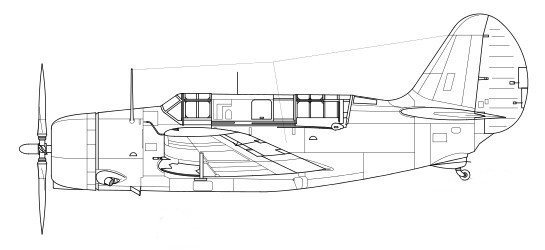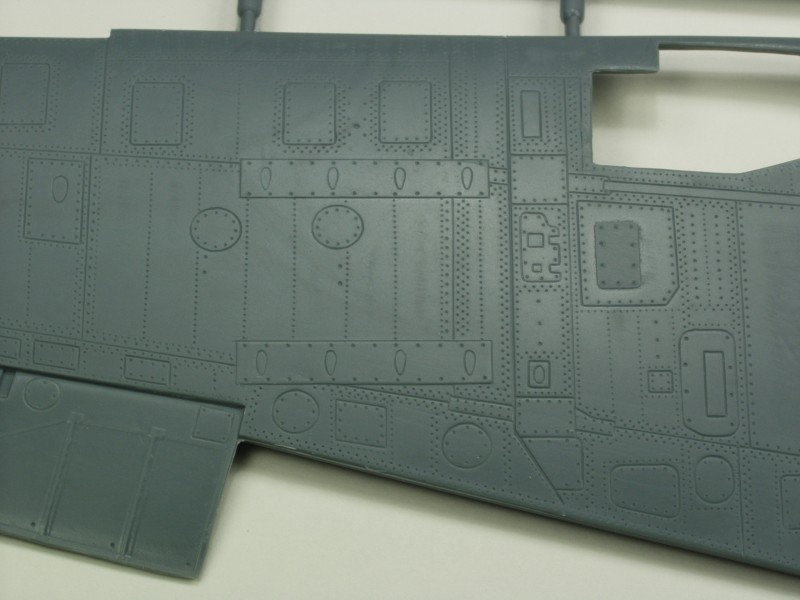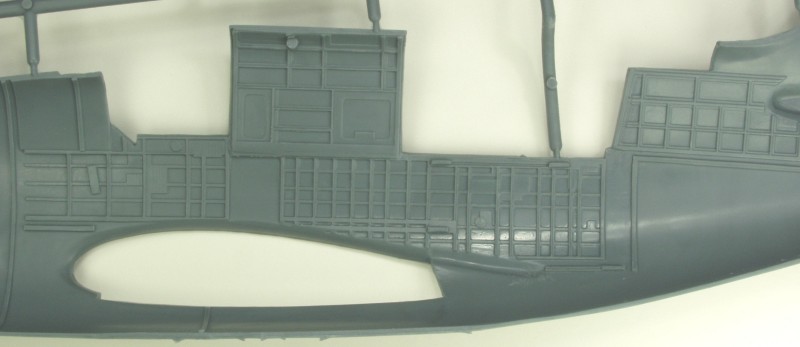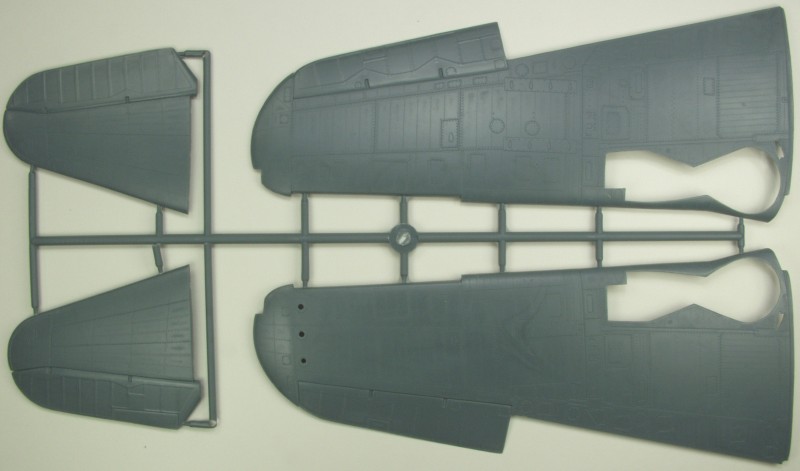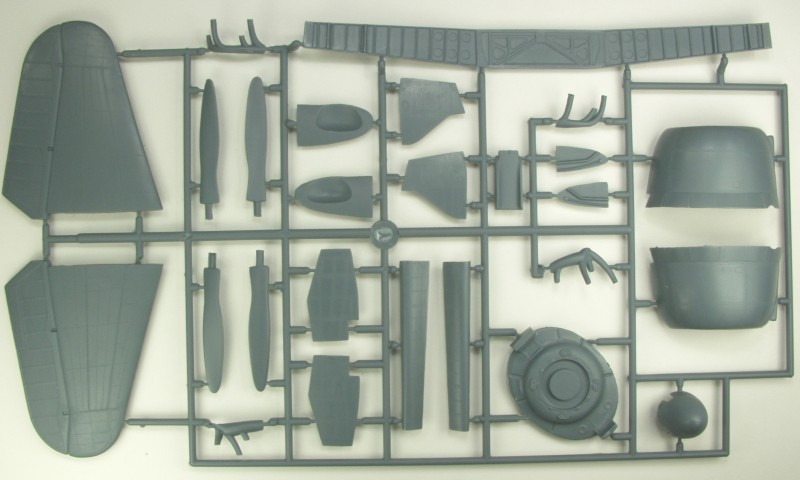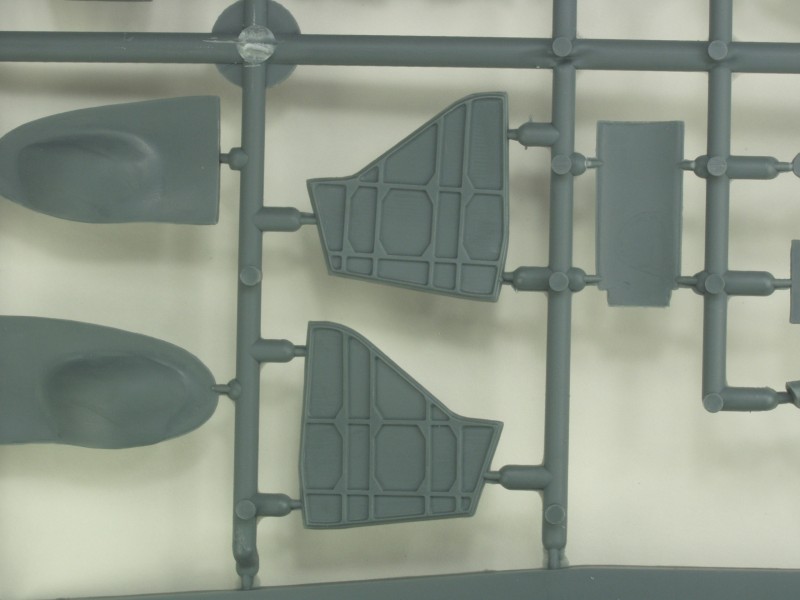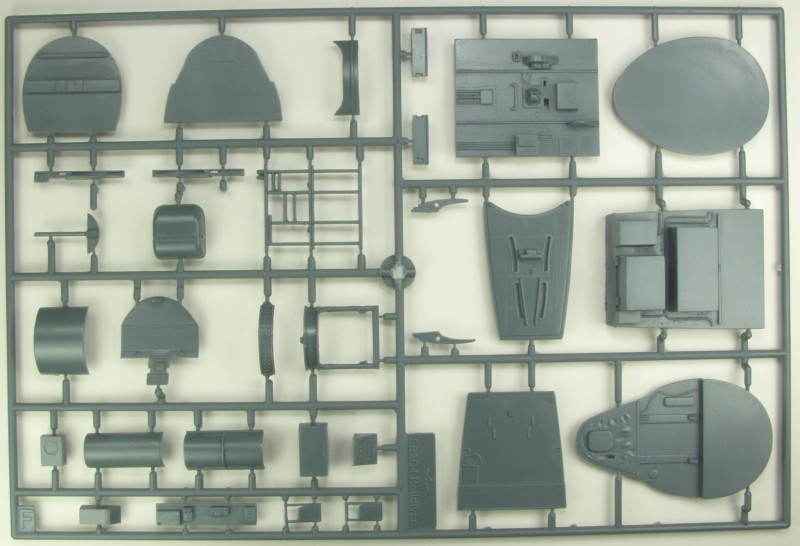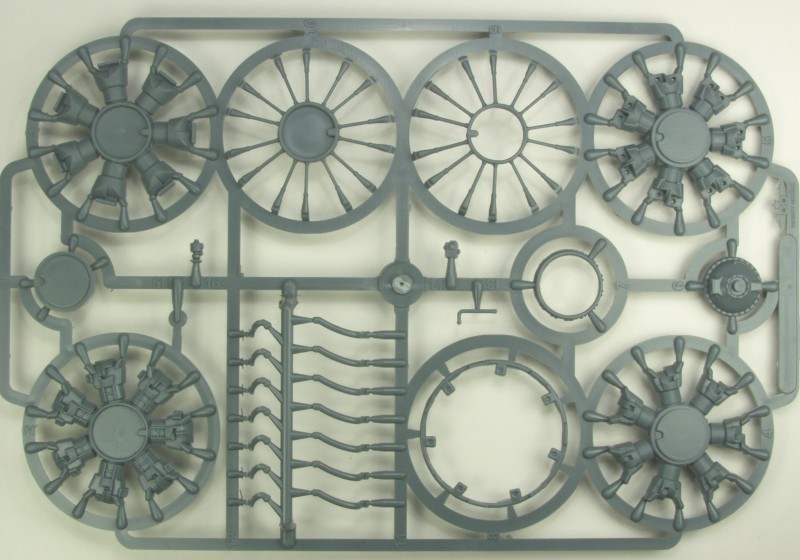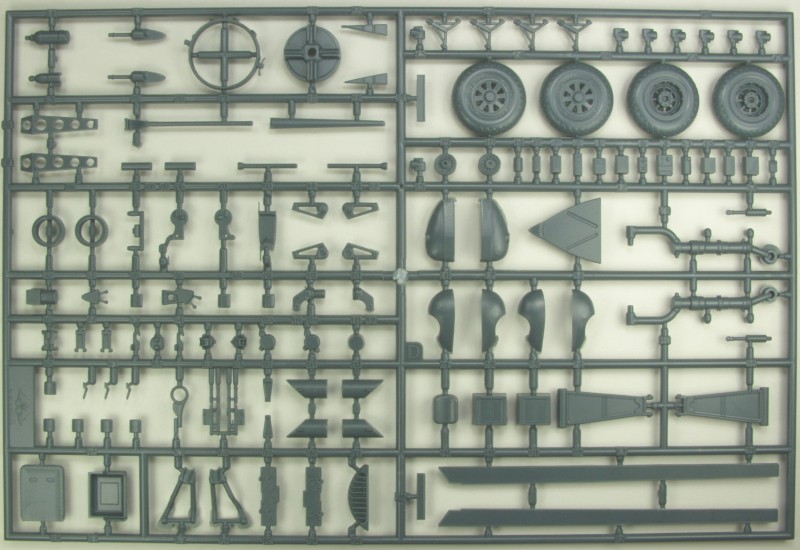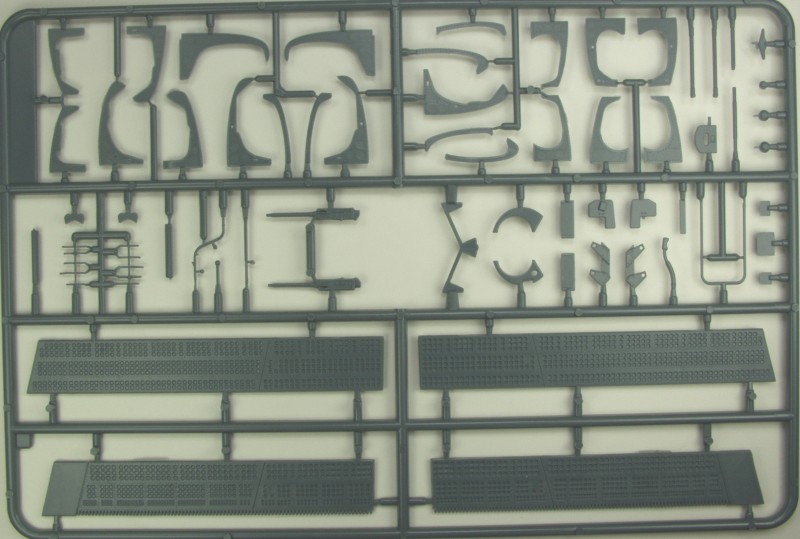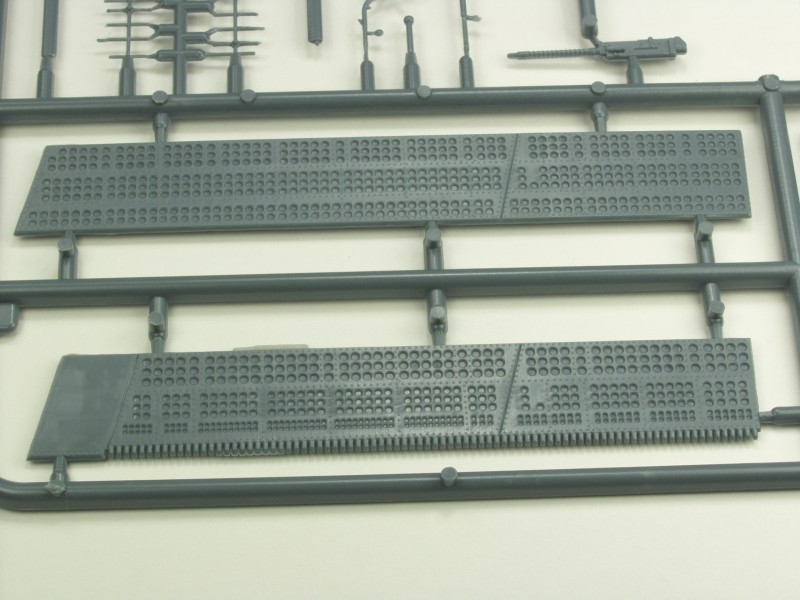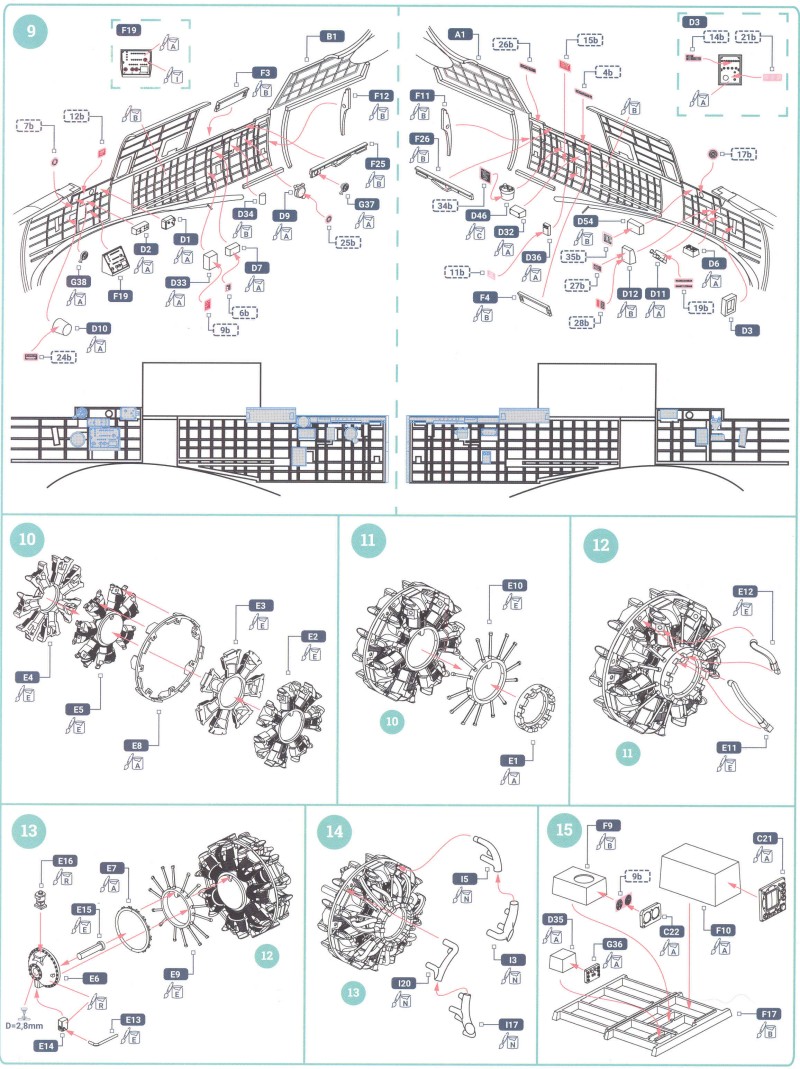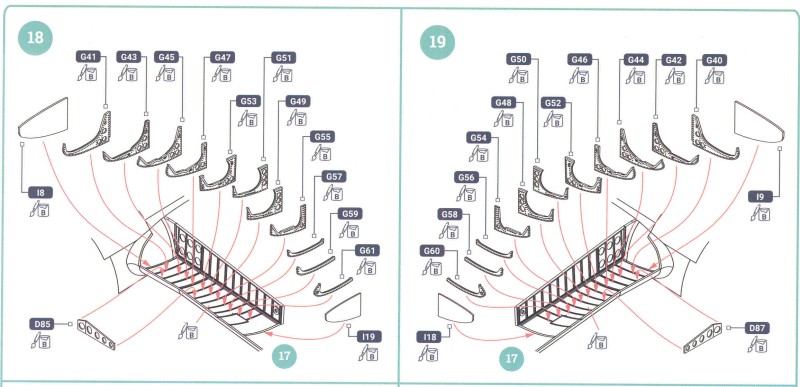
Curtiss SB2C-4
The Helldiver
was developed to replace the Douglas SBD Dauntless. It was a much larger
aircraft, able to operate from the latest aircraft carriers and carry a
considerable array of armament. It featured an internal bomb bay that
reduced drag when carrying heavy ordnance. Saddled with demanding
requirements set forth by both the U.S. Marines and United States Army Air
Forces, the manufacturer incorporated features of a "multi-role" aircraft
into the design.
The Model
XSB2C-1 prototype initially suffered teething problems connected to its
Wright R-2600 Twin Cyclone engine and three-bladed propeller;
further concerns included structural weaknesses, poor handling,
directional instability, and bad stall
characteristics. The first prototype made its maiden flight on 18 December
1940. It crashed on 8 February 1941 when its engine failed on approach,
but Curtiss was asked to rebuild it.
The fuselage
was lengthened and a larger tail was fitted, while an autopilot was fitted
to help the poor stability. The revised prototype flew again on 20 October
1941, but was destroyed when its wing failed during diving tests on 21
December 1941. Large-scale production had already been ordered on 29
November 1940, but a large number of modifications were specified for the
production model. Fin and rudder area were increased, fuel capacity was
increased, self-sealing fuel tanks were added, and the fixed armament was
doubled to four 0.50 in (12.7 mm) machine guns in the wings,
compared with the prototype's two cowling guns. The SB2C-1 was built with
larger fuel tanks, improving its range considerably.
The program
suffered so many delays that the Grumman TBF Avenger entered service
before the Helldiver, even though the Avenger had begun its development
two years later. Nevertheless, production tempo accelerated with
production at Columbus, Ohio and two Canadian factories: Fairchild
Aircraft Ltd. (Canada), which produced 300 (under the
designations XSBF-l, SBF-l, SBF-3, and SBF-4E), and Canadian Car and
Foundry, which built 894 (designated SBW-l, SBW-3, SBW-4, SBW-4E, and
SBW-5), these models being respectively equivalent to their Curtiss-built
counterparts. A total of 7,140 SB2Cs were produced in World War II.
Among its major
faults, the Helldiver was underpowered, had a shorter range than the SBD,
was equipped with an unreliable electrical system, and was often poorly
manufactured. The Curtiss-Electric propeller and the complex hydraulic
system had frequent maintenance problems. One of the faults remaining with
the aircraft through its operational life was poor longitudinal stability,
resulting from a fuselage that was too short due to the necessity of
fitting onto aircraft carrier elevators The Helldiver's aileron response
was also poor and handling suffered greatly under 100 mph airspeed;
since the speed of approach to land on a carrier was supposed to be
98 mph, this proved problematic. The 880 changes demanded by the Navy
and modification of the aircraft to its combat role resulted in a 42%
weight increase, explaining much of the problem.
The solution to these problems began with the introduction of the SB2C-3
beginning in 1944, which used the R-2600-20 Twin Cyclone engine with
1,900 hp and Curtiss' four-bladed
propeller. This substantially solved the chronic lack of power that had
plagued the aircraft. The Helldivers would participate in battles over the
Marianas, Philippines (partly responsible for sinking the battleship Musashi),
Taiwan, Iwo Jima, and Okinawa (in the sinking of the battleship Yamato).
They were also used in the 1945 attacks on the Ryukyu Islands and the
Japanese home island of Honshū in
tactical attacks on airfields, communications and shipping. They were also
used extensively in patrols during the period between the dropping of the
atomic bombs and the official Japanese
surrender, and in the immediate pre-occupation period.
In operational
experience, it was found that the U.S. Navy's Grumman F6F Hellcat and
Vought F4U Corsair fighters were able to carry an equally heavy bomb load
against ground targets and were vastly more capable of defending
themselves against enemy fighters. The Helldiver, however, could still
deliver ordnance with more precision against specific targets and its
two-seat configuration permitted a second set of eyes. A Helldiver also
has a significant advantage in range over a fighter while carrying a bomb
load, which is extremely important in naval operations. The advent of
air-to-ground rockets ensured that the SB2C was the last purpose-built
dive bomber produced. Rockets allowed precision attack against surface
naval and land targets, while avoiding the stresses of near-vertical dives
and the demanding performance requirements that they placed on dive
bombers.
The SB2C
remained in active postwar service in active duty US Navy squadrons until
1947 and in Naval Reserve aviation units until 1950. Surplus aircraft were
sold to the naval air forces of France, Italy, Greece, Portugal, and
Thailand. Greek SB2Cs served in combat in the Greek Civil War with
additional machine guns mounted in wing pods. French SB2Cs flew in the
First Indochina War from 1951 to 1954.
The
Kit
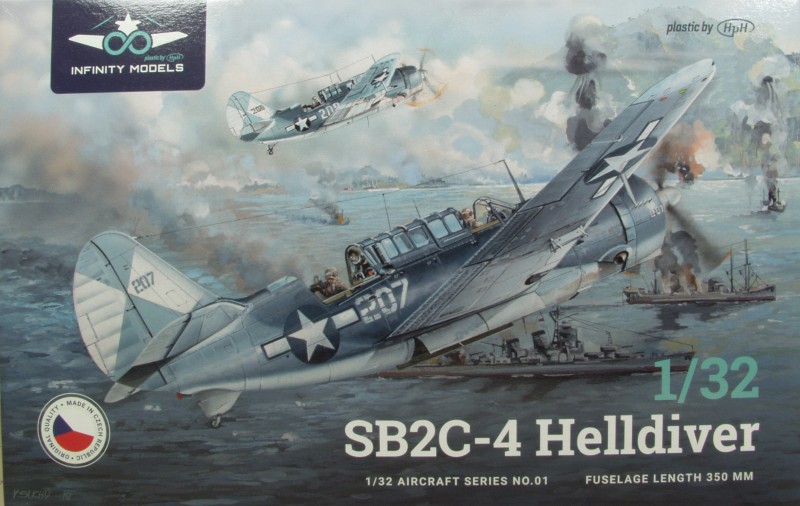
Infinity Models
is a new name in the world of aircraft models and this is their first kit.
The name may be new but the company behind it is not. HPH models is a
Czech company that has been making high quality resin kits for a number of
years and in fact produced a resin kit of this same aircraft a couple
years ago. They tended to build kits of significant aircraft that have
been ignored in 1/32 scale by the main stream kit makers. At some point
they decided they would have a larger audience if they produced injection
molded kits and this is their attempt. HPH is still making resin and
fiberglass kits of very large aircraft in 1/32 that would have limited
appeal to most modelers and the name Infinity identifies their injection
molded kits. So lets take a look and see how they did.
The kit comes
in an appropriately sized box, a top open tray style box with a thin card
stock top and a thin corrugated bottom. As shown above the box top artwork
is quite nice. Inside the box are 8 resealable plastic bags containing the
parts molded in a blue gray color, 1 bag with the clear parts and a bag
with the decals, seat harnesses and belts and a photo etch fret with the
hardware for the harnesses and a gun sight. A statement in the
introduction on the front of the instructions says "Plastic model kit is
produced be 'short run' technology for experienced modelers." At one time
the 'short run' meant poor molding, grainy surface texture, tons of flash
and poor fitting parts. That has changed greatly over the past few years
with many short run kits coming very close in quality the main stream
kits. Lets take a look...
First up is
sprue 'B'. Note: a parts map is included in the instructions with sprue
letters and part numbers but neither are marked on the sprues themselves
with a couple exceptions where the sprue letter is on the sprue. Sprue 'B'
has the starboard fuselage and upper wing half. There is some light flash
to be found and the sprue attachment points tend to overlap the mating
surface. The surface detail consists of recessed rivets, fasteners and
panel lines. The rivets and panel lines are quite fine and uniform but
some care will need to taken when painting as they may tend to disappear
under a heavy coat of paint. The rudder and ailerons are molded in a
neutral position, the leading edge slats, flaps and dive brakes are
separate pieces. The rudder hinge line is a little shallow for my taste
and I suspect many with AMS will cut the rudder off so they can pose it in
a different position. The fabric portion of the rudder is represented with
rib tapes and stitching which again is quite fine. For those who think
they can't live without them, not of the parts have alignment pins. I did
not find any surface aberrations on the fuselage or upper wing
halves. I did not photograph sprue 'A' as it looks identical with
the port fuselage and upper wing half.
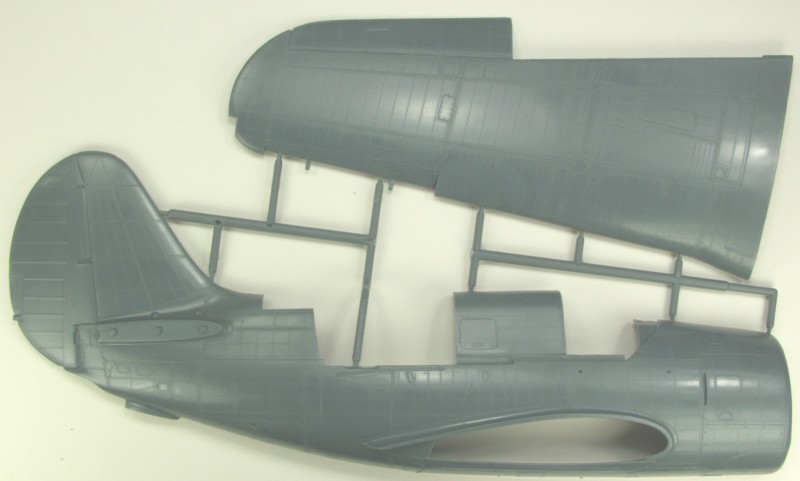
The next photo
shows a close up of the surface detail on the wing which is very nice for
a short run kit. It also shows the internal structure detail of the
fuselage and to their credit there are only two ejector pin marks in the
whole area that might show and they look easy enough to remove assuming
they don't get hidden by other detail.
Sprue 'H' is
next with the top halves of the horizontal stabilizers and the bottom wing
halves. Surface wise these are the same as the other pieces reviewed
above. The hinge lines on the elevators is better than those on the rudder
and again are molded in the neutral position.
Next is sprue
'I' which has the lower horizontal stabilizers, wing spar, prop blades,
engine mounting bulkhead, cowling, exhaust pipes and spinner. also on the
sprue are landing gear doors.
They also
managed to avoid ejector pin marks on the back sides of the gear doors.
Sprue 'F' is
one of the few actually identified on the sprue itself and contains most
cockpit parts. The cockpit and interior is pretty well detailed right out
of the box as will be illustrated later in the instruction manual section.
Sprue 'E' is
all engine parts and with the addition of some wiring should look quite
nice considering the tight cowling.
Sprue 'D' is
another one actually marked and it also has the part number molded in as
well which is really helpful as there are a ton of detail parts on this
sprue, the wheels, molded in halves and not weighted. Many of these parts
are for the interior detail. One place where the short run aspect is more
apparent is on the small detail parts, they have more flash and mold
alignment seams to clean up and a few of the smaller parts are not as
sharply molded as they would be in a main stream kit.
Sprue 'G' also
has the sprue and part numbers molded in again helpful as many parts are
very similar. The bulkheads for the gear bays are another place where the
lightening holes should be drilled out. A few additional detailing parts
and guns for the gunners station are on this sprue. Also included are the
dive breaks and flaps.
Close ups of
the dive brakes and flaps. If you want the holes open, you are in for a
lot of drilling. More on that later.
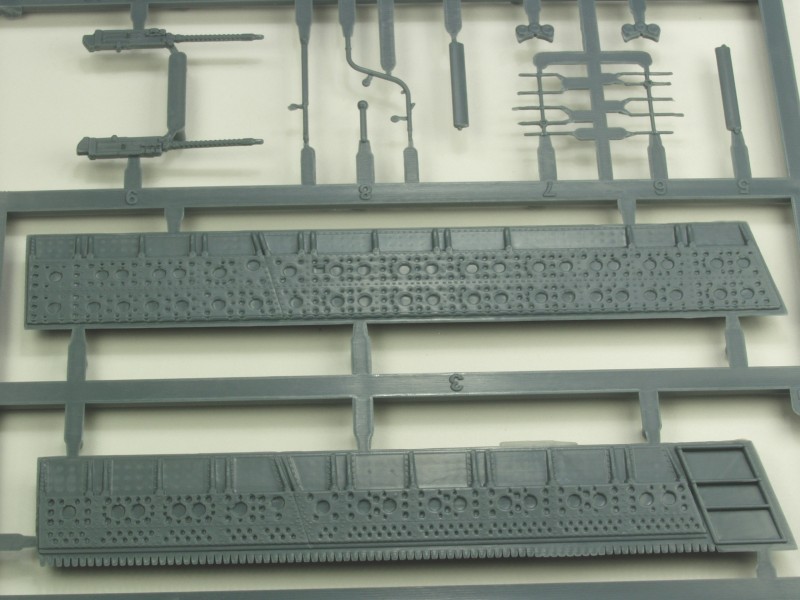
The
clear
parts are quite clear, reasonably thin and have very little
optical distortion. The frame lines are raised and well defined
to make masking easy. Besides the canopies there are navigation
light lenses, formation light lenses and clear instrument panels
which are intended to be used with instrument decals that are
supplied.
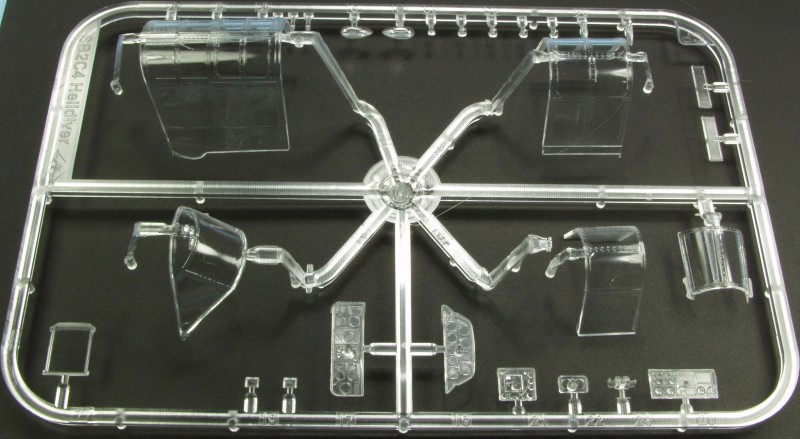
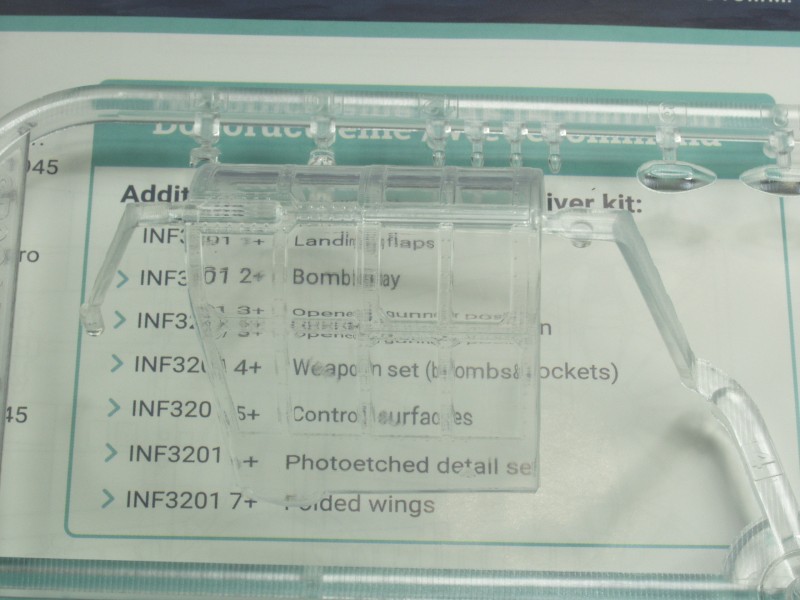
The
decals include markings for two aircraft, one from VB-83 from
the USS Essex, April 1945 and the other from VB-12 from the USS
Randolph, February 1945. The first on is in the tricolor scheme
and the second in the overall blue scheme. There are no
manufacture names on the decals so not sure who did them. The
larger markings are all in register but many of the smaller ones
are not such as the instrument dials and some of the placards.
There are a bunch of stencils, many of them difficult to read on
sheet because of their light color. They should be readable on a
dark surface. The decals are glossy and it's difficult to tell
how opaque the white will be when placed on a dark surface.
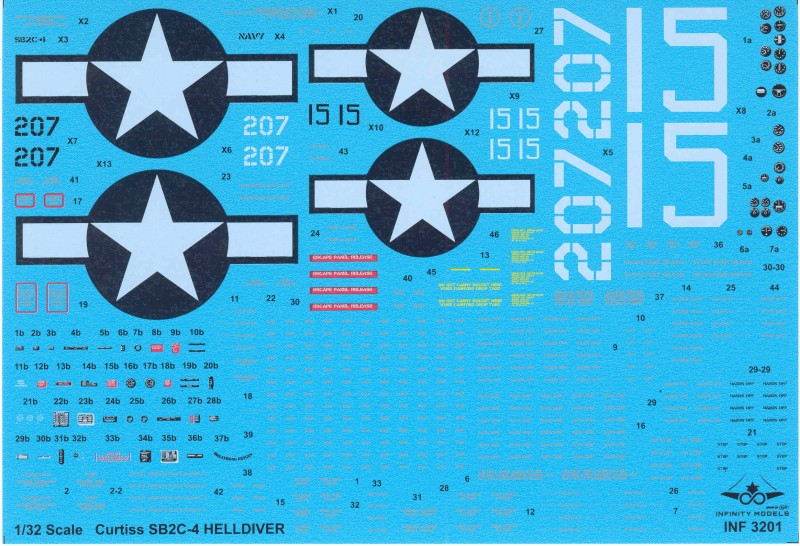
The kit
includes a set of HGW laser cut harnesses and belts. I'm not sure if these
are a type of paper or microfiber but they are precolored. A photo etched
fret with the hardware for the harnesses is included which also has and
gun sight and ammo belts.
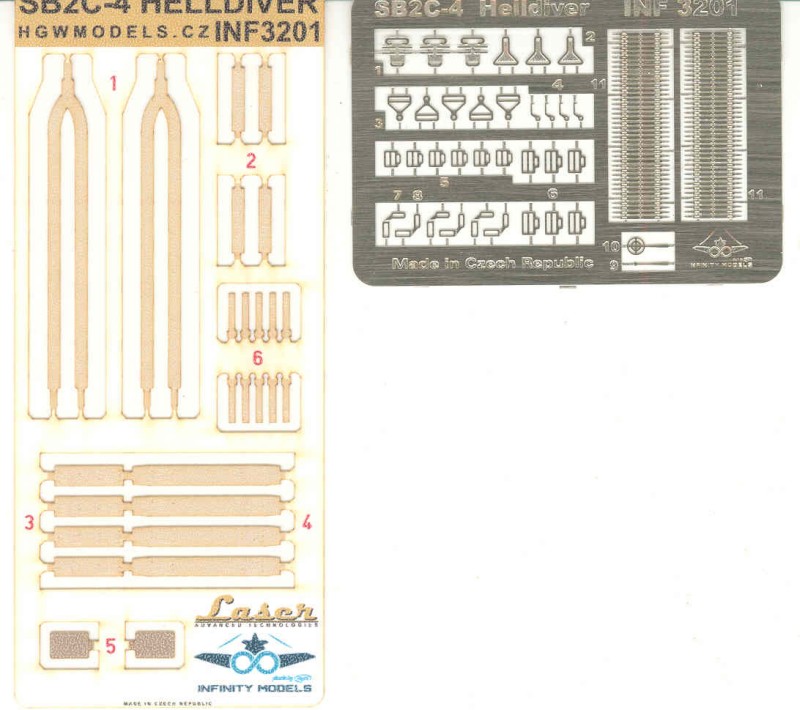
The
instructions are a 16 page booklet, color printed
on glossy paper and stapled at the spine. I've
included a few sample pages to give an idea of the
detail level of the interior. As can be seen the
cockpit and fuselage interior are amply detailed.
Some of the diagrams like step 9 are a little bit
busy so one will need to take care during
assembly.
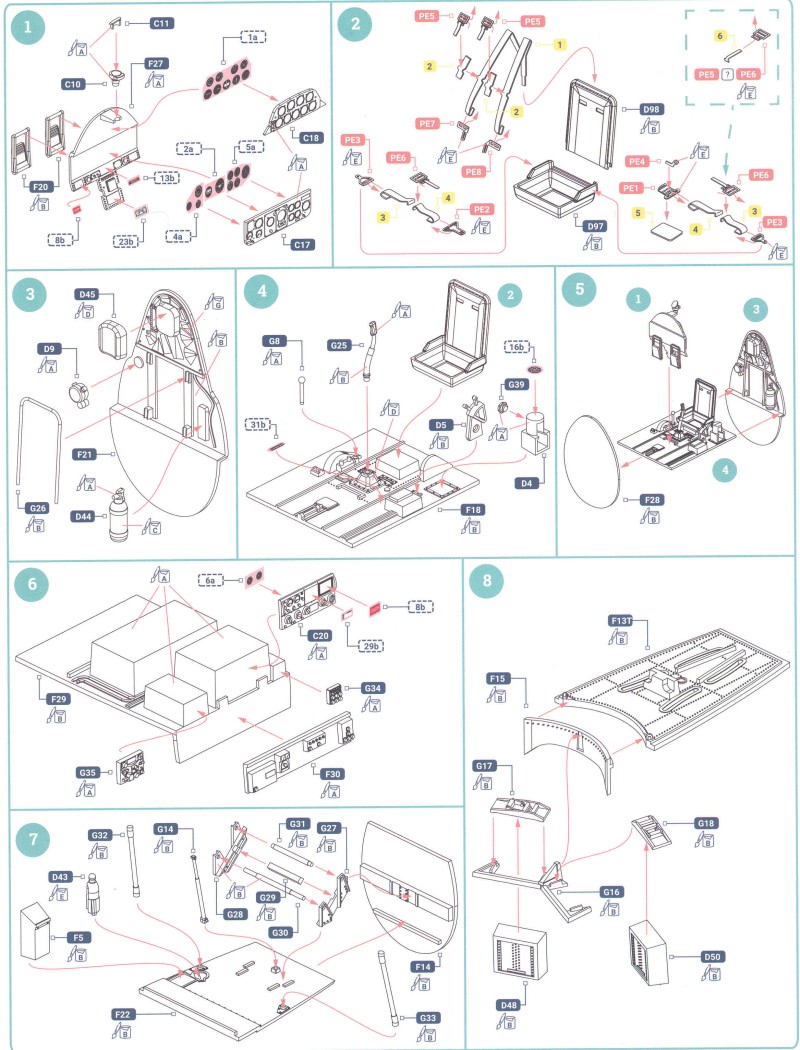
The gear bays
feature a good amount of detail.
As you can see
from the decal placement guide you get a bunch of stencil decals to apply,
the top side of the wing gets almost as many as the bottom.
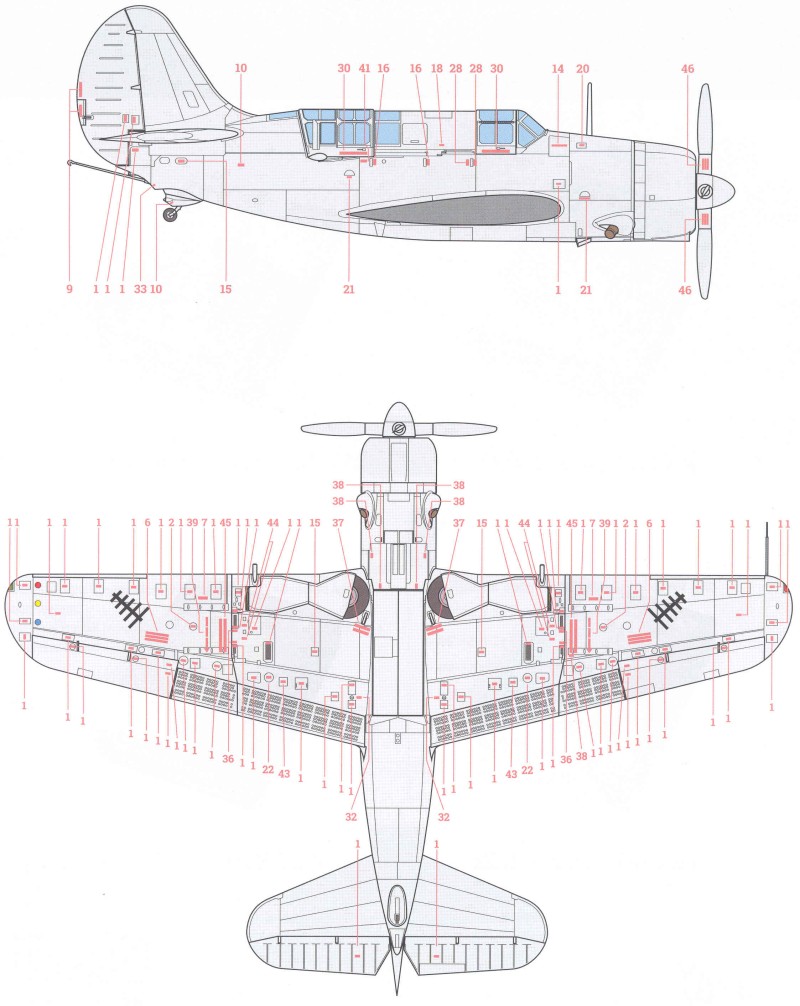
After
Market
Goodies
Like a number of other manufacturers
Infinity is offering their own detailing sets rather than
waiting for after market companies. At the time of this review I
don't think all of the sets are available yet. I haven't seen
the price either but I suspect if you get them all it will
easily double the price of the kit.
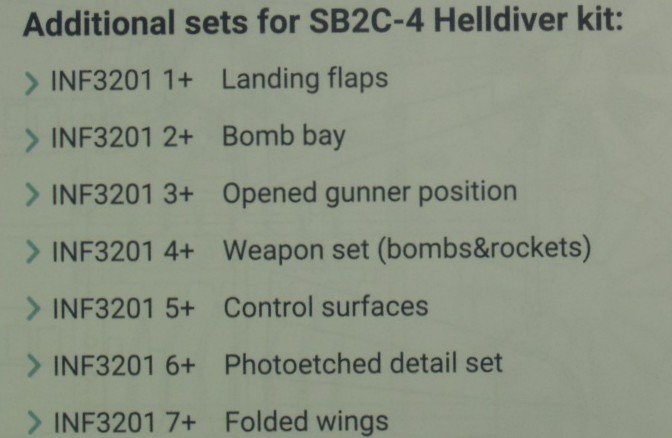
Conclusions
Like many short run kits this one looks
good in the box, only time will tell how well every thing fits
together. Just don't be too surprised if it doesn't go together
like a Tamiya or Hasegawa kit. I applaud their choice of subject
and it should sell well at least in the US and possibly some of
the countries that operated it post war. Their next two kits in
development are a D3A Val and a DH-100 Vampire Mk 5 and I'm very
much looking forward to them as well.
Links
to kit build or reviews
References
Wikipedia
Back to the 1/32 US Aircraft page
Updated 5/13/21


